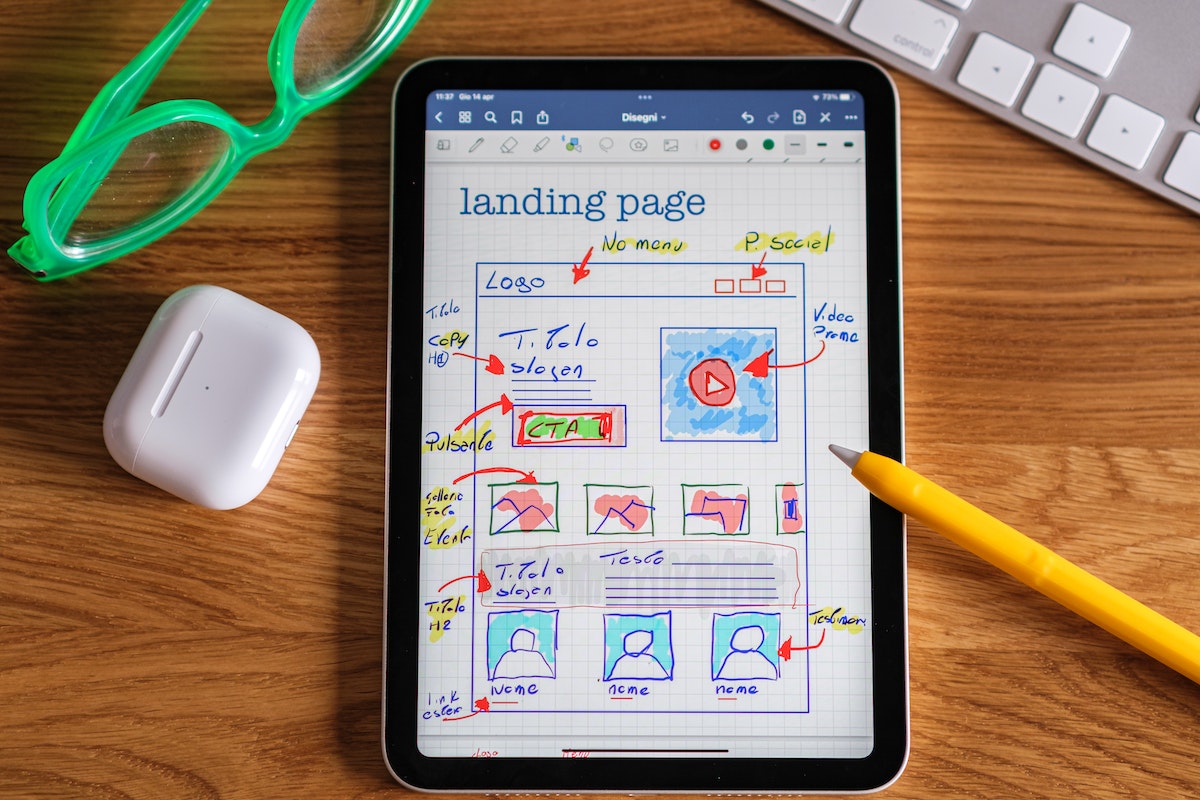Have you ever wanted to create a website that looks professional and stands out from the crowd? If so, then it’s important for you to understand some of the key principles of web design.
Web design is more than just making something look pretty; there are certain standards and techniques every designer should know about in order to make a website successful.
From typography to color theory, understanding these core principles will help you develop creative designs with purpose.

The modern digital landscape is constantly changing which means staying up-to-date on all things related to web design can be difficult. That’s why we’ve compiled this list of essential web design principles every designer should know about.
We’ll go over how they play an integral role in creating effective visuals as well as provide helpful tips on how to implement them into your own work. If you’re not comfortable doing this yourself or want a unique design, you may want to consider hiring a website designer to help build your website.
So if you’re ready to take your website designs to the next level, let’s get started!
User Interface Design
User interface design is an essential element of web design. It’s all about creating a positive experience for users when they interact with your website or app.
For instance, people looking for employment want a smooth process so they would not waste time on irrelevant pages. A high-quality recruitment website design is an indicator of a good user interface. It also makes it stand out motivating people to be their first choice every time.
To do this, it’s important to consider the user’s needs and how you can make their life easier while on your site. This includes easy navigation, visual hierarchy and responsive design – making sure that your website looks great no matter what device the user is viewing it on.
Furthermore, usability testing should be conducted before launch in order to ensure that any potential issues are identified and corrected.
By focusing on these principles, designers can create websites that provide users with a seamless experience they won’t soon forget. For this purpose, designer use different tools such as Webflow and figma. You can compare webflow vs figma and choose the one that fulfill your needs.
All of this results in better user engagement, leading to increased conversions and brand loyalty.
Visual Hierarchy
Visual hierarchy is an important concept in web design. It’s the idea of using visual elements to emphasize certain parts of a website, while deemphasizing others. This helps users navigate a page more easily and quickly find what they’re looking for.
One way to create visual hierarchy is by organizing content into sections. For example, you could use fonts or colors that are different from one another to indicate the start of each section on your webpage.
You can also use size or placement to draw attention to something specific within a particular section. Creating distinct sections with varying levels of emphasis allows visitors to intuitively understand how information should be read on the website.
Using contrasting colors and shapes can also help guide visitors’ eyes through the page and create a sense of flow as they move through it.
Using this technique properly will ultimately lead to better user experiences which result in higher engagement rates and better conversion rates. All these factors come together to ensure successful web design projects overall.
Accessibility
Accessibility is a key component of web design. It refers to how easily users can interact with and navigate the site. This includes making sure people with disabilities are able to access all parts of the website, as well as ensuring that the content displays properly on different devices.
Designers must consider accessibility when creating websites. They should pay attention to visual elements as well as structural elements such as form labels, heading levels, and input field types.
Ensuring proper coding practices will help make sites more accessible to those who rely on assistive technology such as screen readers or voice recognition software.
Good web design also requires thoughtful consideration of color contrast, font sizes, and page structure in order to create an experience that works for everyone regardless of disability or device used.
Taking steps like these will ensure that your website meets best practice standards for accessibility and usability. If you are from Ireland, it can be beneficial to look into professional website design in Cork for tailored solutions. Companies specializing in website design in this area often have localized expertise that can further enhance your site’s effectiveness.

Responsive Design
As the sun sets on one horizon, a new dawn rises on another. In web design, this is no different; for with accessibility comes responsive design – an essential tool to ensure that user experiences are optimized across devices.
Responsive design enables content to adjust and flow intuitively within any environment or device resolution.
By utilizing breakpoints in CSS, designers can define how their designs will appear at certain viewport widths and resolutions. This allows them to customize layouts depending on device size.
Content that may be arranged side by side on a laptop screen might instead stack atop each other when viewed from a mobile phone or tablet. Responsive design also makes it easier for websites to adapt as technology evolves over time.
The goal of responsive design isn’t just about fitting pages into varying sizes; it’s about creating an optimal experience for users regardless of which device they’re using. The best way to achieve this is through careful page structure and layout planning before coding begins.
Transitions between elements should be smooth and effortless, while all important information must remain accessible without hindering navigation or performance.
Content Strategy
Content strategy is an important part of web design. It involves planning, creating and managing content to ensure that it meets the needs of both the user and the designer.
When designing a website, there are three key principles for successful content strategy:
- Focus on clarity – Keep your content concise and make sure it conveys its intended message in a clear and understandable way.
- Utilize visuals – Incorporate images, videos and other visual elements into your site’s content to create engaging experiences for users.
- Optimize for search engines – Ensure that your website is optimized with keyword phrases so that it can be easily found by search engine crawlers.
Creating quality web designs requires thoughtful consideration about how best to present information to audiences. Content should be organized logically and designed in ways that promote engagement from visitors.
By following these simple guidelines, you can create effective websites that appeal to users while still being SEO friendly.
Conclusion
In conclusion, web design principles are the building blocks of successful websites. Being aware of user interface design, visual hierarchy, accessibility, responsive design, and content strategy is essential for any designer looking to create an outstanding website.
Knowing these principles can help make your designs stand out in a crowded online space.
Indeed, mastering these five key concepts will have designers creating the most impressive sites ever seen on the internet – truly works of art that visitors won’t be able to resist exploring further.
With just a few tweaks here and there based on these principles, you’ll be transforming ordinary websites into extraordinary ones in no time flat!
Ultimately, it’s clear that understanding web design basics is paramount if you want to achieve success as a web designer. So don’t wait another second – get started now and show the world how creative and talented you really are.